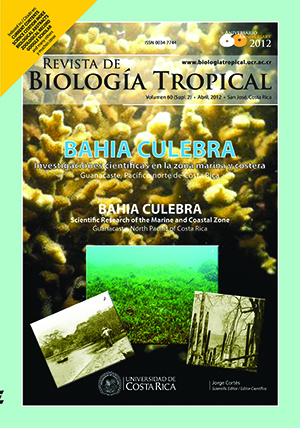Abstract
The 1982-83 El Niño event produced a high coral mortality (50-90%) in several localities in the Eastern Tropical Pacific, which resulted in an outbreak of the sea urchin populations of Diadema mexicanum A. Agassiz, 1863 in some reefs, leading to an increase in coral framework bioerosion. In Costa Rica, El Niño impact varied among three of the most important coral reefs localities, being higher in Cocos Island, moderate in Caño Island, and lower in Culebra Bay; D. mexicanum densities followed the same pattern. To understand the historic role of this sea urchin on the balance between bioerosion and bioacretion, we made a reconstruction of bioerosion impact based on current patterns of carbonate ingestion by the sea urchins, growth rates and skeletal density of the main coral builders, and historical information of sea urchin population density and coral cover. The reconstruction model varied depending on locality. At Cocos Island, the effect on the reef carbonate budget ranged from negative to positive, improving coral recruitment and the recovery of the reef. At Caño Island, there was no apparent effect. In Culebra Bay, the effects ranged from a positive-neutral effect to a negative one, the latter possibly associated with an increase of eutrophic conditions that facilitated bioerosion of the coral framework. The importance of this sea urchin in reef dynamics varies with amount of reef protection, overfishing, and coastal management, and it has a large influence on the carbonate balances of the Pacific Costa Rican coral reefs.##plugins.facebook.comentarios##
Downloads
Download data is not yet available.






